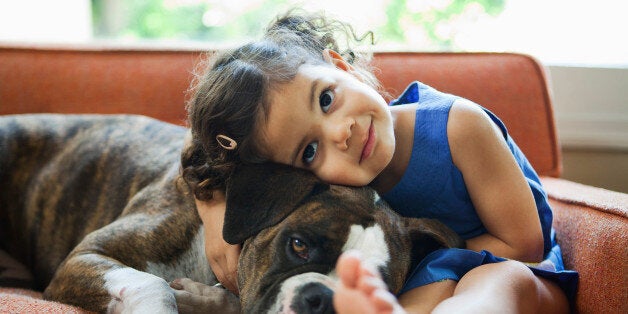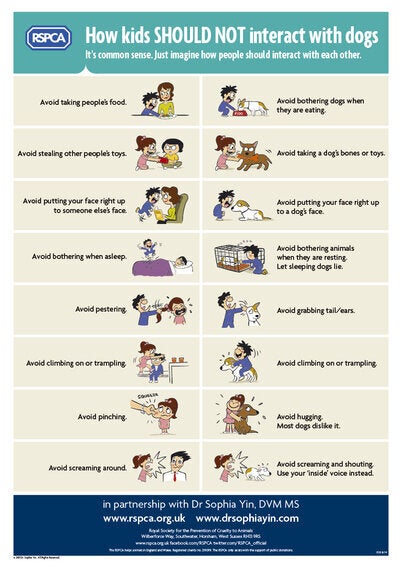
We've all seen the 'oh so cute' images being shared around social networks of children hugging dogs, kissing dogs on the face or in some cases even sitting or standing on their backs. While these images may seem like a harmless bit of fun, as a dog behaviour and welfare expert and mother of a young girl, a great many of these images send shivers down my spine.
There are an estimated 10.5 million pet dogs in the UK and many live happily as part of a family, but each year also sees thousands of people admitted into hospital with a dog bite and many are young children. For example, in the 12 months to May 2013, 1 in 6 hospital admissions were children aged 9 years or below.
The number of these 'cute' images and the responses which they get demonstrate that many parents think it is acceptable to allow their children to play with dogs in a way that many dogs will find threatening or frightening and could respond by snapping or biting. More worrying still, many appear not to be able to recognise the tell tale signs of a dog who is uncomfortable, upset or telling the child that they want to be left alone and this creates some potentially dangerous situations for both dogs and children.
With the Christmas holidays just around the corner, is it likely that dogs and children will be spending more time together, and as parents, it is important that we understand how dogs and children can interact safely and be able to understand what our dog is trying to tell us using body language and other signals.
Think about it from a dog's perspective for a moment, to dogs, most children, and certainly in my daughters case, are very expressive in the way they show affection, giving lots of kisses and cuddles and often giving little notice. However, dogs find it very hard to understand children's behaviour and even harder to communicate with them that they're feeling uncomfortable, threatened or would like to be alone.
We also know that children find it hard to understand and interpret dog behaviour. Research by Professor Kerstin Meints and colleagues at the University of Lincoln discovered that 69% of 4 year olds interpret aggressive dog faces where a dog is snarling and baring his teeth, as the dog smiling or feeling happy. This shows that there is a worryingly lack of ability in children to interpret facial expressions in dogs which again, creates potentially dangerous situations. However, the study also found that adults make hardly any mistakes when interpreting dog facial expressions which reinforces the role that parents can play in keeping children safe around dogs and in teaching their own children how to interact with dogs safely.

To help adults teach children to recognise aggression and other more subtle signals that dogs show, the RSPCA has designed an easy to follow guide in partnership with Certified Clinical Animal Behaviourist, Julie Bedford and artist, Lili Chin to illustrate the different behaviours that dogs use to tell us how they are feeling, if they are 'happy' and want to play, 'uncomfortable' and want you to leave them alone and even 'angry' and unhappy. It's accompanied by a set of simple 'Golden Rules' and a set of colourful educational posters produced in partnership with internationally-acclaimed vet and animal behaviourist Dr Sophia Yin aimed at helping parents to teach children how they should (and shouldn't!) interact with dogs using appealing visual aids.
We hope that in time those 'cute' pictures of children grabbing dogs faces and trying to ride them like ponies will be replaced with images of children and dogs having fun together safely, playing fetch and hide and seek.
You can download our posters and guides to staying safe here.